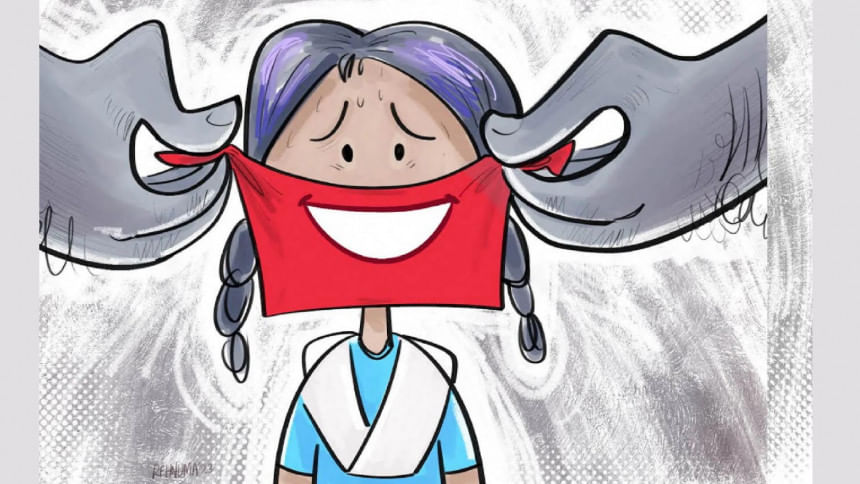What do we know about the Anti-bullying/-ragging Policy for Educational Institutions

The Ministry of Education has recently issued a policy mandating strict measures titled as "Policy for the Prevention of Bullying and Ragging in Educational Institutions 2023" in an effort to combat the culture of bullying and ragging in all educational institutions throughout the country.
For easier understanding, the policy can be divided into several parts. The first phase of the policy defines what constitutes 'bullying' and 'ragging'. The policy then discusses the formation and scope of the "Anti-bullying/-ragging Committee". Following that, it states what authorities, officials, and heads of educational institutions should do to prevent and remedy bullying and ragging, as well as what measures should be taken if any member of the governing body, trust, or any official is involved in bullying or ragging, and finally, it discusses the procedures for filing and disposing of complaints.
What is 'Bullying' and 'Ragging'
In the third paragraph of the policy, bullying and ragging are classified into five categories. If we sum up, the categories are-
(a) Verbal assault: Any form of verbal or physical mockery, including calling someone a bad name, using obscene or abusive language, threatening behaviour, etc.
(b) Physical assault: Causing injury, slapping, pouring paint or water, tying someone up, pushing them, forcing them to do something, or making any unusual gesture, etc.
(c) Social bullying and ragging: Spreading rumours about others or insulting them because of their caste, religion, social position, work, etc.
(d) Cyber bullying and ragging: Writing or publishing any defamatory word/photo on social media against anyone.
(e) Sexual bullying and ragging: Grabbing someone's clothing, touching, or pinching someone in a deliberately sexual way, etc.
Anti-bullying/-ragging Committee
The policy specifies that each educational institution must form a bullying and ragging-prevention committee of three to five members, known as the "Anti-bullying/-ragging Committee". It will take precautions to avoid suicide, ragging, or bullying. It will be established at the start of the academic year and will hold seminars, meetings, symposiums, and workshops every three months. It will strictly monitor any ragging or bullying that occurs in the institution and will set up a complaint box or digital drop box to prevent ragging.
Mentionable that in 2009 one bench of the High Court Division, on hearing a public interest litigation filed by Bangladesh National Women Lawyers Association (BNWLA), issued a directive with a set of guidelines, urging employers and educational institutions to establish a seven-member sexual harassment complaint committee, headed by a female employee, if available, and with at least two members from outside the organisation – preferably those working on gender issues and sexual abuse. According to the BNWLA's report published in November last year, only 71 percent of educational institutions and 39 percent of workplaces have formed such committee. Out of all these committees, only 44 percent are effective, while 57 percent of them do not have complaint boxes for the victims to report the incidents as per the guidelines.
Measures to be taken to prevent and remedy bullying and ragging
The policy outlines extensive responsibilities for authorities, officials, and educational institution heads in the fight against ragging and bullying. It states that:
(a) The authority should install CCTV in areas of institutions where ragging is likely to occur.
(b) If any incident occurs in the residential halls, the in-charge will report to his higher authorities.
(c) The authorities will run a campaign on the website and through posters on campus about the examples and consequences of bullying and ragging, as well as hold a day-long "anti-bullying and ragging day" at the start of the academic year to raise awareness. Again, authorities will make arrangements for students to take part in extracurricular activities with a view to stop bullying and ragging.
(d) Teachers, students, and parents must take an oath. They will sign a pledge to never bully or rag, report any incidents they notice, and notify authorities if necessary.
(e) Educational institutions should train a specific teacher and designate him as a "counselor" to counsel students as required.
(f) The heads of the institutions should work to implement the policy and take the necessary steps. And the other authorities and field-level officials involved with education administration will monitor bullying on a regular basis and assist in the policy's implementation.
Finally, the policy added that if a complaint is received against a teacher, staff, committee member, or even a member of the board of directors or governing body, it is required to take action under criminal law, if applicable.
Along with these, a number of guidelines and regulations have been given in the policy. The concerned authorities, as well as the students and their parents, must remain aware in order to prevent the heinous crime of ragging and bullying and for the policy to be executed effectively.
The Writer is an Official Contributor, Law Desk, The Daily Star.

 For all latest news, follow The Daily Star's Google News channel.
For all latest news, follow The Daily Star's Google News channel. 



Comments